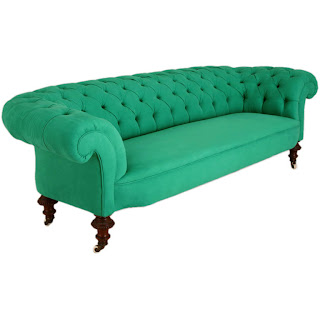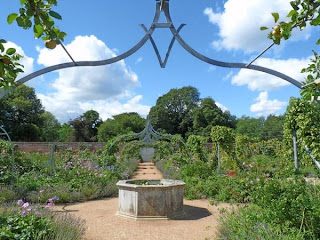The Many Forms of a Writing Table
What kind of table defines itself as a writing table ??
These days being sat working at the kitchen table is almost an everyday occurrence in many households, in fact I'm practising just that right now..
As more people work from home and the function of a home office becomes evermore the workplace for many, a writing table should come into its own.
Personally when I think of a writing table my mind immediately conjures up an image of a large Victorian mahogany table loaded with drawers, a gold tooled green leather insert all sat upon a set of thick turned legs on large brass castors.
However, obviously there's so much more to writing tables than just that...
 |
| An English Early 19th William IV Mahogany Writing Table. (Note the the classic fluted legs, tooled leather insert & brass castors, a perfect example of the time!!) Offered by www.hunttinghouseantiques.com |
 |
| An Italian 18th Century Neo Classical Inlaid Fruitwood Writing Table Offered By www.drumandco.com |
A Little History
It was around the later 1700's and almost a century after the desk had became a regular furniture item that the “Writing” or “Library” table became popular.
These were fine pieces of furniture usually made in mahogany with turned or fluted style legs, a lighter form of desk that enabled the user more freedom of movement without losing precious drawer space.
To begin with the tables were seen mainly in Libraries and homes of the wealthy but gradually as people began to write more correspondence and take care of more of their own clerical work the popularity for these tables grew. Soon they were being made in numerous sizes to suit smaller home studies or libraries. The trend for small ladies writing tables also became popular.
 |
| An English George III Satinwood Writing Desk with Floral Paintwork circa 1800 (Note the delicate floral decoration on all sides, this makes it not just the perfect Ladies table but also the table can be used in many areas not just against a wall. Offered By www.stanleyweiss.com |
A Few Obvious Things Worth Checking
Look at the back of the piece are there any marks or screwholes where mirror supports were mounted, these are hard to disguise and usually a sure sign it was a dresser.
Remove all the drawers and look inside, this may sound strange but you can tell a great deal about case furniture by looking “inside”. Look up for holes in the top that have been filled and hidden under the leather insert this would give another clue of it being a dresser, maybe trinket drawers were once sat on the top another tell tale sign it didn't start life as a writing table.
Lastly and this sounds the most obvious, but sit at it, is it the right height ? Do you have enough “clearance” for your knees to sit comfortably at it for an hour or 3 ?
A Few more of my Favourites
 |
| An English Kidney Shaped Writing Table in Mahogany Circa 1820. Offered By www.susansilverantiques.com |
 |
| A Swedish Painted Writing Table circa 1900's Offered By www.harborviewantiques.com/ |
 |
| A Robert Marcius Tessellated Fossil Stone Writing Table USA circa 1970's Offered By www.assemblageltd.com |




Comments
Post a Comment